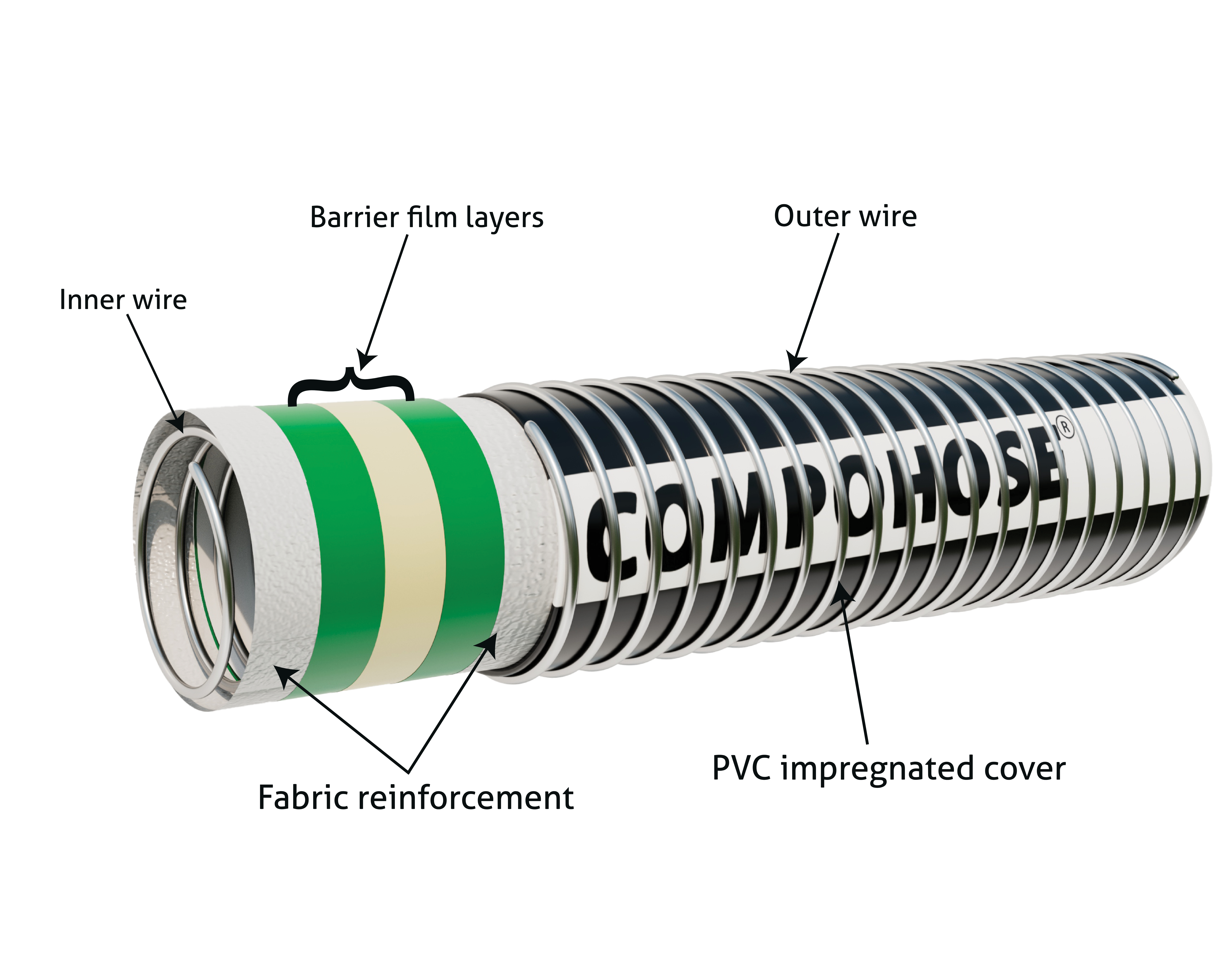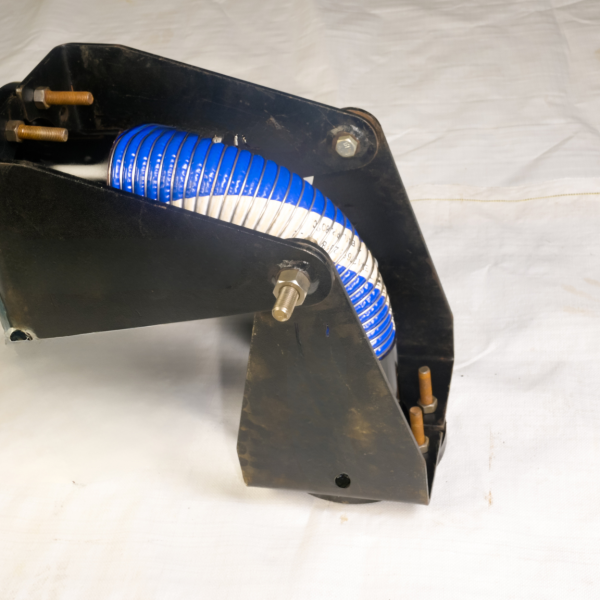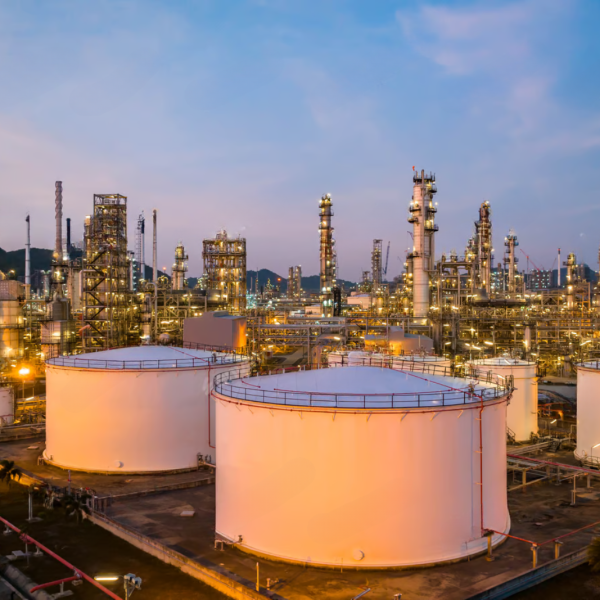Roof Drain

Roof drain composite hoses are specialized flexible hoses designed for effectively draining rainwater and other liquids from floating rooftops, particularly in industrial and commercial settings. These hoses are composed of multiple layers of different materials, each chosen for its specific properties that contribute to the overall functionality and durability of the hose. Proper installation, maintenance, and periodic inspections are essential to ensure the hoses continue to function optimally and prevent any potential leaks or drainage issues.
Compliance : Roof Drain hoses are manufactured in accordance to EN 13765 / 2018 Type 3


Construction
- Hose Type - GPS, SPS
- Inner wire - Galvanised Steel /Stainless Steel 304, 316
- Inner Lining Multiple layers of polypropylene fabric, film and polyester barrier layers
- Outer wire -Stainless Steel 304, 316
- Cover - Abrasion-resistant PVC impregnated fabric
- End fitting -As per client requirements, externally crimped and swaged
Features
- Tough PVC outer cover resists dragging, wearing, abrasion, UV and ozone resistance ensures maximum durability and safety.
- Light Weight & Highly Flexible
- Specially compounded inner linings.
- Joints free hoses which eliminates much of the standard problems with drainage facilities.
- Suitable for 0.9 Bar Vacuum rating.
- Working Pressure: 14 Bar (200 PSI) (Heavy Duty)
- Safety factor 4:1 as per EN 13765 / 2018 (can be achieved higher if required)
- Temperature Range for this hose is -30° C to +100° C (-22° F to +212° F)
Applications
Roof Drainage Systems: The primary application of Roof drain composite hoses is in floating roof drainage systems. These hoses are used to channel rainwater and other liquids from rooftops to designated drainage areas. They provide a flexible and efficient way to transport water away from the building, helping to prevent water damage and leaks.
Rainwater Harvesting: In systems that collect rainwater for reuse, Roofdrain composite hoses can be used to direct rainwater from the rooftop to storage tanks or reservoirs. These hoses need to be durable and resistant to UV exposure and other weather conditions to ensure reliable operation.
Emergency Drainage: In the event of heavy rainfall or other emergency situations, Roof drain composite hoses can be deployed to quickly drain excess water from rooftops and prevent flooding.
Temporary Drainage: During construction or renovation projects, temporary Roof drain composite hoses can be used to direct water away from work areas, preventing water damage to building materials and providing a safer working environment.
Specification Table:
| CODE | SIZE | MEAN OD | MAX W.P | MIN BURST | BEND RADIUS | WEIGHT (KG) | MAX LENGTH | |||||||
| NAME | MM | INCH | MM | BAR | PSI | BAR | PSI | MM | INCH | GG & SG | MT | FT | ||
| 07GS75 | 75 | 3” | 90 | 14 | 200 | 56 | 800 | 350 | 14 | 3.00 | 30 | 100 | ||
| 07GS100 | 100 | 4” | 121 | 14 | 200 | 56 | 800 | 400 | 16 | 5.60 | 30 | 100 | ||
| 07GS150 | 150 | 6” | 179 | 14 | 200 | 56 | 800 | 575 | 23 | 11.00 | 30 | 100 | ||
| 07GS200 | 200 | 8” | 233 | 14 | 200 | 56 | 800 | 800 | 32 | 16.40 | 30 | 100 | ||
*Higher burst pressure can be achieved on special request
Safety Standards
Rigorous Safety Testing
COMPOHOSE assemblies undergo comprehensive testing, conducted at 1.5 times the rated Working Pressure (W.P). This stringent testing adheres to the EN 13765 standard, ensuring a paramount level of safety and reliability.
Provision of Manufacturer's Test Certificate
With each supply of COMPOHOSE composite hose assemblies, a Manufacturer's Test Certificate is included. This certificate serves as a confirmation of the product's quality and compliance with safety standards, providing added assurance to users.
Clear Burst Pressure Specification
The burst pressure of the composite hose is explicitly indicated for ambient temperature conditions. This vital information enhances safety awareness and empowers users to operate within secure pressure limits.
Effective Electrical Continuity
The composite hose's electrical continuity is assured through the integration of two bonded wires connected to the end fitting. This innovative design promotes the dissipation of accumulated electrical charges, mitigating the risk of static flashes and associated hazards.



